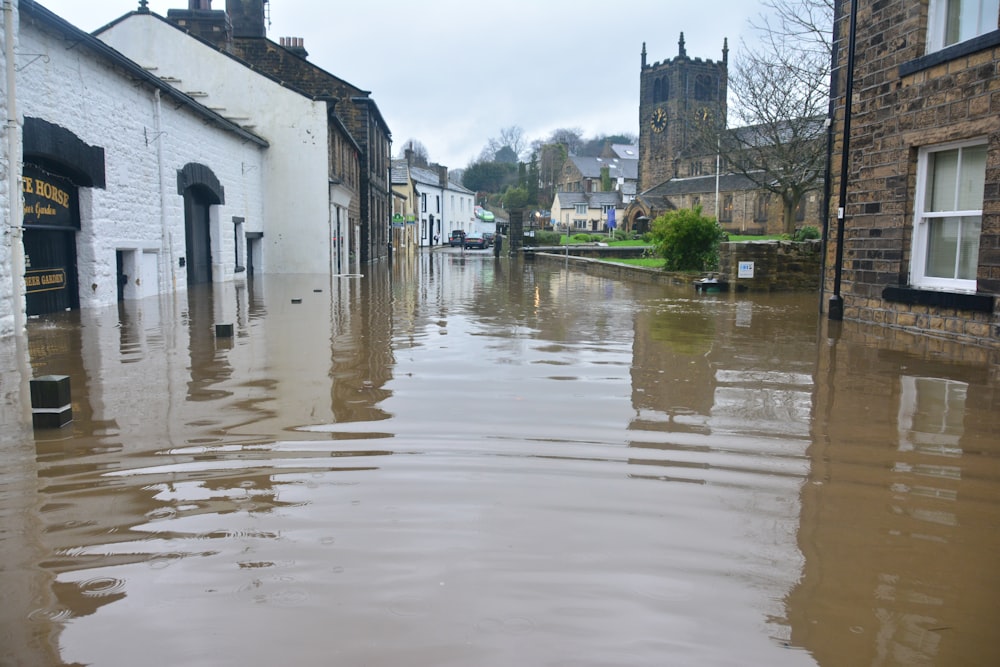When designing a building or structure, architects, engineers and designers have to consider climate change, the ever-changing environmental condition of the world, so that a building can function properly. Such considerations would include the local climate and their design parameters, ensuring that their design can withstand temperatures, rain, snow, wind, and even geological disasters such as tsunamis, earthquakes, and hail.

However, nature can choose to be ruthless and cause these parameters to exceed, which results in a chance that some aspects, if not the entirety, of the design to fail. For instance, buildings can be designed to withstand strong winds. However, when an unexpected and powerful wind blows, it may tear off roof tiles or even the majority of the roof. Or an extremely heavy downpour may cause houses to flood their basements. Unfortunately, these are to be expected and, in some instances, cannot be entirely avoided. Still, such damages can be repaired, and extra measures can be taken to reduce the likelihood of the same event occurring again.
But climate change is a cause for concern. As the climate worsens, the design parameters will be far more exceeded, perhaps with a higher frequency. There will be permanent changes in the environment, such as an increase in temperature and humidity. It could also be likely that lesser occurring events might become a frequent occurrence.
As climate change continues, temperature and humidity will increase, and houses may heat up faster, resulting in overheating. An increased humidity could also provide insects, such as termites, with a new home to live in, which could pose a serious threat to homes by damaging them, or mosquitos that irritate people more than they already are.
 How increased humidity compromises reinforced steel by rusting the steel rods in the concrete. (Photo credits: https://civildigital.com/effects-corrosion-reinforcement-signs-preventive-measures/)
How increased humidity compromises reinforced steel by rusting the steel rods in the concrete. (Photo credits: https://civildigital.com/effects-corrosion-reinforcement-signs-preventive-measures/)
Another effect of increasing humidity is how it affects reinforced concrete. Rising humidity can cause reinforced concrete to lose its strength and durability by reducing its compressive strength and allowing microbial growth due to moisture. Furthermore, as humidity increases, so do pH levels, which will compromise both the integrity of the concrete and its adhesive bonds. While a hotter environment results in concrete drying faster, it also causes the concrete to be weaker and porous.
Flooding may occur more often due to the planet heating up, which may cause flooding of homes and thereby the abandonment of homes and stronger winds and rains, which could severely damage the cladding of houses and lead to leaking issues in homes.
Another effect of the increase in global temperatures is how heat expands materials, especially metals. Since metals are the structural foundation of a building or structure, if heated and expanded past the design parameters, it could cause buckling and result in shaking, especially if the building is a skyscraper. Aside from material expansion, high heat can cause materials to melt, such as tar, resulting in a softer surface on the road, which might cause accidents for both pedestrians and vehicles.
 A crooked building that resulted from subsidence. (Photo credits: https://www.mirror.co.uk/news/weird-news/britains-drunkest-pub-tipsy-looking-tavern-4907604 )
A crooked building that resulted from subsidence. (Photo credits: https://www.mirror.co.uk/news/weird-news/britains-drunkest-pub-tipsy-looking-tavern-4907604 )
In addition, an increase in subsidence occurrences is another effect of increasing global temperature. The ground a structure is built upon gives way, causing cracks in the structure and perhaps even collapse, primarily when the clay soil absorbs water and swells, then hardens when it dries. Subsidence can and may get worse with changing rainfall patterns.
Furthermore, coastal buildings are susceptible to more rusting by being exposed to the chloride in seawater and moisture in the surrounding air, which carries more salt content.
Whether the connection between climate change and current architecture is true or coincidence, it is a good warning of how fragile buildings are in the face of nature. Modern architecture may very well fall victim to climate change much easier compared to traditional architecture. The only way we can tackle the situation is to adapt and change the design of parameters. For existing buildings, retrofit them. For new and upcoming buildings, construct them in a way that they can withstand the current climate change and the future patterns. The sooner this happens, the safer and better it is.
As the climate changes, the frequency, strength and duration of extreme weather events are expected to increase. Architects, engineers, and designers will need to re-evaluate their standard practices for the design, construction, and operation of buildings. While buildings are affected by climate change, they are also a significant contributor to the change as they consume a lot of power. Architecture 2030, a commercial organization, stated that buildings contribute 40% of greenhouse gas emissions, thus targeting carbon reduction. The sooner this is done, the faster the negative impacts of natural hazards like hurricanes, heatwaves and flooding.

As society continues to work towards green and sustainable buildings and structures, where can we get the materials and resources to upgrade existing buildings to adapt to climate change, and how would we start on sustainable design and invest in training future architects, engineers and designers?
